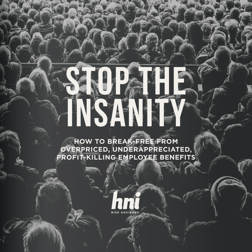HHS recently released “100 Days of Action on the President’s American Patients First Blueprint.”

Some of the information looks great, such as 60% fewer brand-drug price increases than the same period in 2017 and a record breaking 126 generics approved in July. Additionally, 4 drug companies canceled planned price increases and 13 committed to price freezes for the rest of 2018.
These are a good start in that they impact unit cost. However, they don’t address some of the core problems that must be addressed by the employers. As you’ll see, many of the problems are driven by other factors that are as basic as understanding the cause and effect of insurance:
- The understanding that increasingly higher rebates may be causing increased list prices, and that those rebates may be funded in part by member out of pocket costs.
- How many hands / companies are in the process and are building additional cost into the price the members and employers pay?
- How do we decrease unnecessary utilization and waste?
- How do we get members more engaged in their options?
- Educating companies and their members on transparency into the true costs of the prescription.
The President’s call to action has items that can also be applied to individual companies and their members. The focus is creating long-term strategies to reduce the exposure to risk in a manner that can also help their members. Some of those are:
- Improve Competition – the PBM’s provide fantastic value to the market and to the members. The question is how we can help the members to effectively use the available tools, and how do we increase the transparency into the true costs and alternative options.
- Better Negotiation – While the President’s plan focuses heavily on CMS and Part D, the notion of negotiating / carefully selecting your vendor correlates to the private sector. Some examples are: how do the vendors demonstrate their actual costs and the financial incentives, how will the employer share in the rebates, and how can the member’s out of pocket costs be reduced through an alternative approach and point-of-decision education?
- How can the member more effectively use the available resources? By doing so, the member can ultimately win with lower costs, and the transition to the employer’s responsibility will also decrease.
Ultimately, any fix needs to be accomplished on a long-term and sustainable basis. For a long-term strategy to be effective, it needs to recognize that the cost of poor risk management is likely higher than the price of insurance, and that truly educating a company and its leaders ( as opposed to placing product to solve a problem ) has significant value.

Learn how leading companies are building a strategy to end health care insanity:
.png?width=69&height=53&name=Acrisure%20Logo%20(White%20Horizontal).png)

